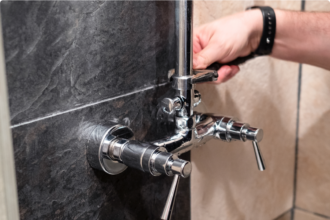Working outside the typical 9-to-5 schedule is becoming increasingly common. Nurses, security personnel, hospitality staff, factory workers, and delivery drivers often operate on rotating shifts, night shifts, or extended hours. While this lifestyle is essential for the functioning of modern society, it comes at a cost—especially to physical health and mental well-being.
Shift workers are more prone to sleep disturbances, chronic fatigue, digestive issues, and musculoskeletal strain due to long periods of standing, sitting, or repetitive movements. As awareness grows around these challenges, massage therapy is emerging as one of the most effective and accessible recovery tools for those with irregular routines.
The Physical Toll of Shift Work
Unlike standard office jobs, shift work often involves significant physical activity or unnatural body positions for extended periods. Long-standing hours can lead to lower back pain, leg swelling, and poor circulation. Repetitive movements, such as those in manufacturing or food service, can cause joint stiffness and muscle tension over time.
Even for those in seated positions—like drivers or control room operators—the static nature of the job puts pressure on the spine, hips, and shoulders. Add in the challenge of disrupted circadian rhythms, and the body becomes trapped in a cycle of tension without adequate recovery.
Why Massage Works for Irregular Schedules
Massage therapy offers both immediate and long-term benefits for shift workers. First, it promotes blood circulation, which counteracts the effects of prolonged sitting or standing. It also reduces inflammation, breaks up muscle adhesions, and releases the tension that builds up from repetitive motion or postural imbalance.
Just as importantly, massage supports the nervous system. By stimulating the parasympathetic response, it lowers heart rate, reduces stress hormones, and encourages deep relaxation. For individuals struggling to fall asleep during off-hours, massage can help reset the body’s natural rhythms by easing both physical and psychological stress.
Sleep Recovery and Massage
One of the most profound effects of massage on shift workers is improved sleep quality. Unlike medications that may induce drowsiness without genuine rest, massage promotes restorative sleep. Studies have shown that regular massage therapy helps increase serotonin and melatonin levels, which are crucial for maintaining a healthy sleep-wake cycle.
This is especially important for night shift workers who attempt to sleep during daylight hours when the body is naturally wired to be alert. Massage, especially when done in a dark, quiet environment, helps signal to the body that it’s time to rest—improving both sleep onset and sleep duration.
Mental Wellness and Stress Reduction
Shift workers often experience heightened levels of mental stress. Isolation, disrupted social life, and lack of routine can lead to anxiety and emotional exhaustion. Massage therapy acts as a counterbalance by promoting emotional release through physical contact, reducing feelings of loneliness and burnout.
Many who incorporate massage into their weekly or bi-weekly routine report feeling more emotionally stable, less irritable, and more capable of handling the unpredictability that comes with their profession.
Customizing Massage for Shift Workers
Not all massages are created equal, and shift workers benefit most from personalized sessions. Therapists often adapt their approach depending on the individual’s work demands. For example, a hospital nurse who spends 12 hours on their feet may benefit from lymphatic drainage and deep calf muscle work, while a truck driver may need focused lower back and neck release.
Timing also matters. Some prefer massages immediately after a shift to aid in muscle recovery, while others schedule it before rest to enhance sleep quality. Flexibility in scheduling is crucial, which is why mobile massage services or late-hour studios are becoming increasingly popular.
Making Recovery Accessible
Affordability and accessibility are often barriers for shift workers seeking wellness services. However, as demand grows, more massage providers are offering affordable packages or employer-supported wellness programs. Some companies are even integrating massage into workplace health plans as a preventive health measure.
Online platforms have also helped bridge the gap by offering curated lists of massage providers who cater to irregular schedules. Platforms such as 오피 have become increasingly popular for helping users find reputable massage services suited for shift-based lifestyles. With features like verified reviews, localized listings, and flexible availability, these platforms ensure that support is just a few clicks away.
Final Thoughts: Recovery Is Not a Luxury, It’s a Necessity
For shift workers, health challenges are not hypothetical—they are part of daily life. While the job may demand sacrifice, recovery doesn’t have to. Massage therapy provides a powerful solution that addresses the physical wear and emotional fatigue that accumulate with irregular work schedules.
Investing in massage isn’t about indulgence—it’s about sustainability. It’s about staying functional, focused, and healthy in a lifestyle that pushes the body and mind to their limits. And with the right access and education, shift workers can take back control over their well-being—one session at a time.

















